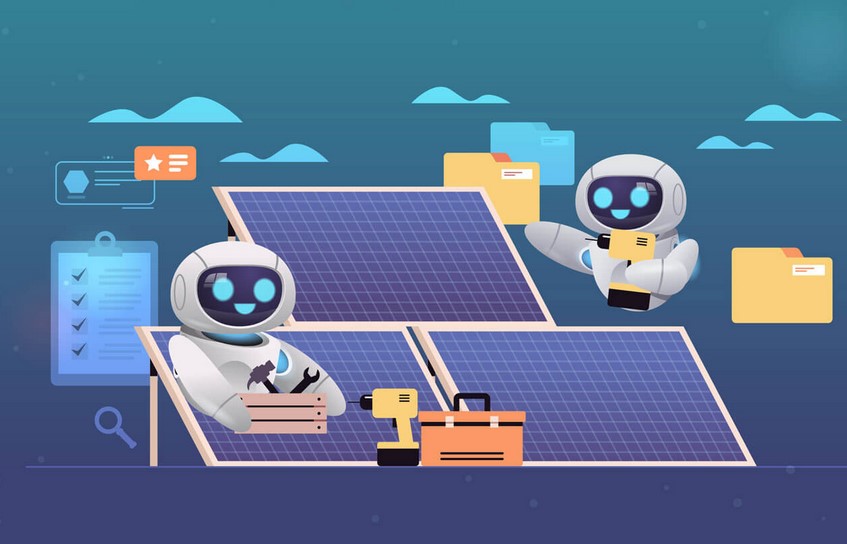Solar power, a cornerstone of renewable energy, has been the subject of various myths and misconceptions. In this article, we’ll debunk seven common myths about solar power, shedding light on the realities of this sustainable energy source.
Myth 1: Solar Power is Too Expensive
Cost is a significant factor when considering any energy source. However, the idea that solar power is prohibitively expensive is outdated. Advances in technology have made solar panels more affordable than ever. In fact, the long-term savings on electricity bills can be substantial. For those interested in economical energy solutions, the Ground Power Generator review discusses an alternative approach to harnessing energy, potentially reducing reliance on traditional power sources.
Myth 2: Solar Panels Don’t Work in Cloudy Weather
Solar panels don’t require direct sunlight to generate electricity; they can still produce power on cloudy days, albeit at a reduced rate. The efficiency of solar panels has improved significantly, allowing them to capture a broader spectrum of sunlight. The impact of weather on energy efficiency is a fascinating topic, much like the insights offered in “7 Innovative Ways to Reduce Your Energy Bills”, which explores various methods to enhance energy efficiency in your home.
Myth 3: Solar Energy Can’t Power Modern Homes
Modern solar panel systems are more than capable of powering a typical household. With the right setup, they can generate enough energy to run all your appliances and even store excess energy for later use. The evolution of home energy systems is a dynamic field, similar to the developments discussed in “How to Transform Your Home into a Self-Sustaining Haven”, which looks at innovative ways to create energy-independent homes.
Myth 4: Solar Panels Require Constant Maintenance
Solar panels are surprisingly low maintenance. They don’t have moving parts, reducing the likelihood of breakdowns. Regular cleaning and occasional checks by a professional can keep them in optimal condition.
Myth 5: Solar Panels Decrease Property Value
On the contrary, solar panels can increase your property’s value. They are seen as upgrades, much like a renovated kitchen or a new roof. Homebuyers appreciate the lower electricity costs associated with a solar-powered home.
Myth 6: Solar Panels Are Bad for the Environment
The production of solar panels does have an environmental impact. However, the overall footprint is significantly lower compared to traditional energy sources. Once installed, solar panels produce clean, renewable energy for years, offsetting their initial production costs in terms of environmental impact.
Myth 7: You Can’t Rely on Solar Power Alone
While it’s true that solar power has its limitations, advancements in battery technology are making it increasingly feasible to rely solely on solar energy. Battery storage systems can store excess energy generated during the day for use at night or during periods of low sunlight.
Conclusion
Debunking these myths is crucial in understanding the true potential of solar power. As we embrace more sustainable living practices, it’s important to have accurate information about renewable energy sources. Solar power, along with innovative solutions like the Ground Power Generator, are paving the way for a greener, more energy-efficient future.
The Evolution of Solar Panel Technology

Solar panel technology has undergone a remarkable evolution over the past few decades. Initially, solar panels were bulky, less efficient, and only feasible for specific applications. Today, technological advancements have led to the development of thinner, more flexible, and highly efficient panels. This progress is not just in the panels themselves but also in the inverters and storage systems, making solar energy more practical and accessible for residential and commercial use. The modern solar panel can harness a greater percentage of solar energy, converting it into usable electricity more efficiently than ever before.
Integrating Solar Power into Everyday Life
Integrating solar power into our daily lives goes beyond installing panels on rooftops. It’s about embracing a sustainable lifestyle. Solar energy can power everything from household appliances to electric vehicles. Communities are now seeing the rise of solar-powered charging stations, public lighting, and even solar roads. The adaptability of solar energy in various aspects of life demonstrates its versatility and potential as a cornerstone of our future energy mix. As we move towards greener living, solar power stands out as a key player in reducing our carbon footprint and promoting environmental sustainability.
The Role of Solar Power in Global Energy Transition
The global energy transition towards renewable sources has put solar power in the spotlight. Countries around the world are investing in solar infrastructure to reduce reliance on fossil fuels. This shift is not only environmentally motivated but also economically driven. Solar power, with its decreasing cost and increasing efficiency, is becoming a more attractive option for nations seeking energy independence and sustainable development. The role of solar energy in this transition is critical, as it offers a scalable and clean solution to meet the world’s growing energy needs while combating climate change.
Conclusion
Understanding the realities of solar power is crucial in appreciating its role in our present and future energy landscape. By debunking common myths and recognizing the advancements and potential of solar technology, we can better embrace and support this clean, renewable energy source. As we continue to innovate and integrate solar energy into our lives, we make strides towards a more sustainable and environmentally conscious world.




















